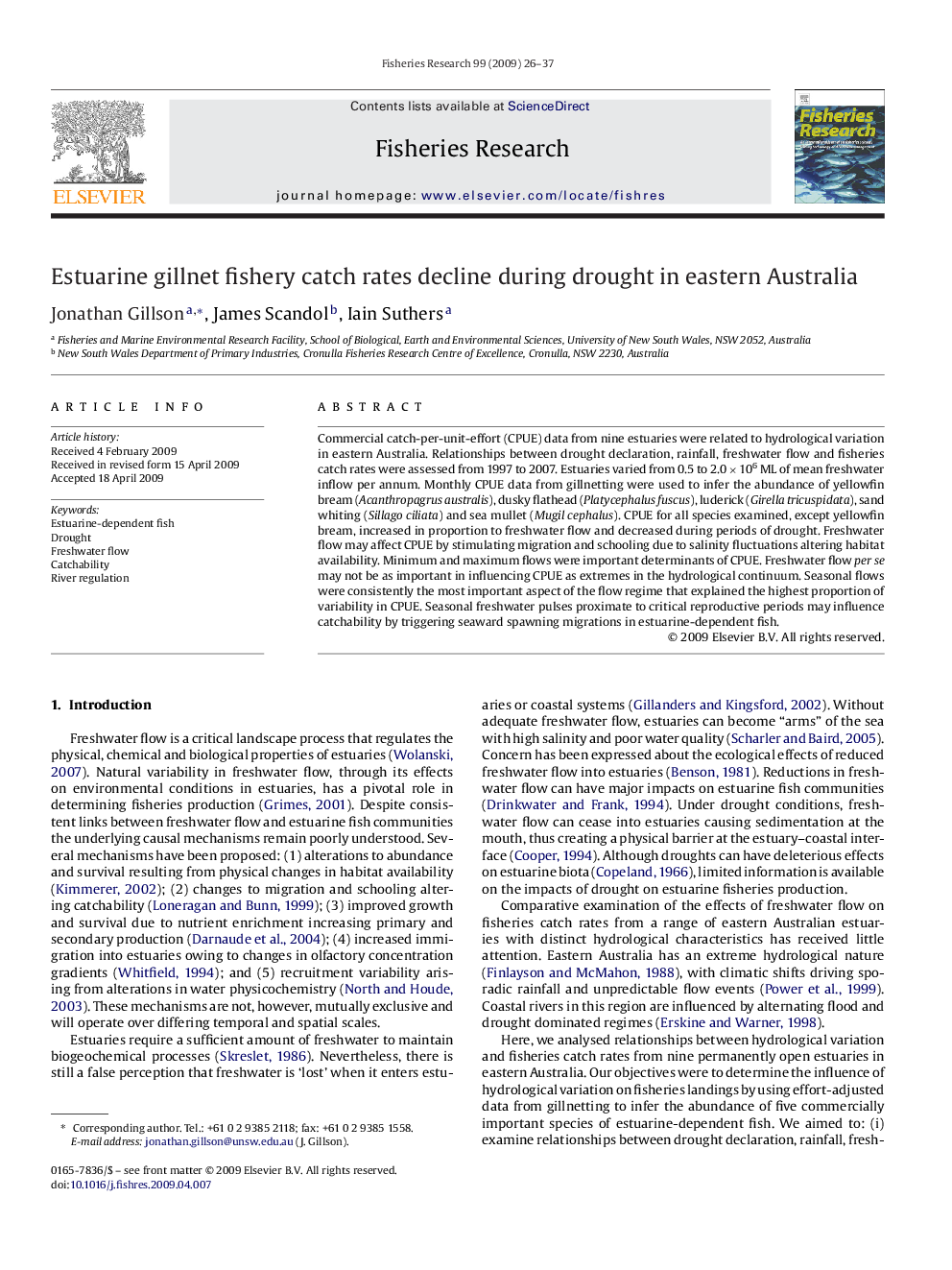| Article ID | Journal | Published Year | Pages | File Type |
|---|---|---|---|---|
| 4544091 | Fisheries Research | 2009 | 12 Pages |
Commercial catch-per-unit-effort (CPUE) data from nine estuaries were related to hydrological variation in eastern Australia. Relationships between drought declaration, rainfall, freshwater flow and fisheries catch rates were assessed from 1997 to 2007. Estuaries varied from 0.5 to 2.0 × 106 ML of mean freshwater inflow per annum. Monthly CPUE data from gillnetting were used to infer the abundance of yellowfin bream (Acanthropagrus australis), dusky flathead (Platycephalus fuscus), luderick (Girella tricuspidata), sand whiting (Sillago ciliata) and sea mullet (Mugil cephalus). CPUE for all species examined, except yellowfin bream, increased in proportion to freshwater flow and decreased during periods of drought. Freshwater flow may affect CPUE by stimulating migration and schooling due to salinity fluctuations altering habitat availability. Minimum and maximum flows were important determinants of CPUE. Freshwater flow per se may not be as important in influencing CPUE as extremes in the hydrological continuum. Seasonal flows were consistently the most important aspect of the flow regime that explained the highest proportion of variability in CPUE. Seasonal freshwater pulses proximate to critical reproductive periods may influence catchability by triggering seaward spawning migrations in estuarine-dependent fish.
